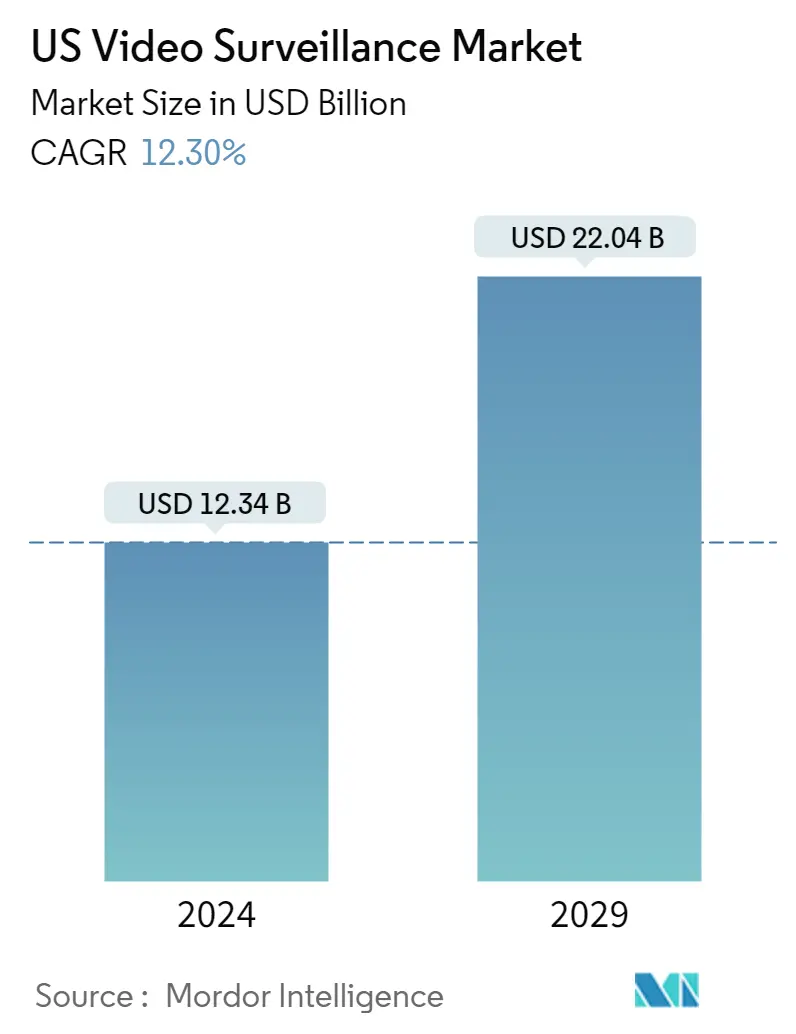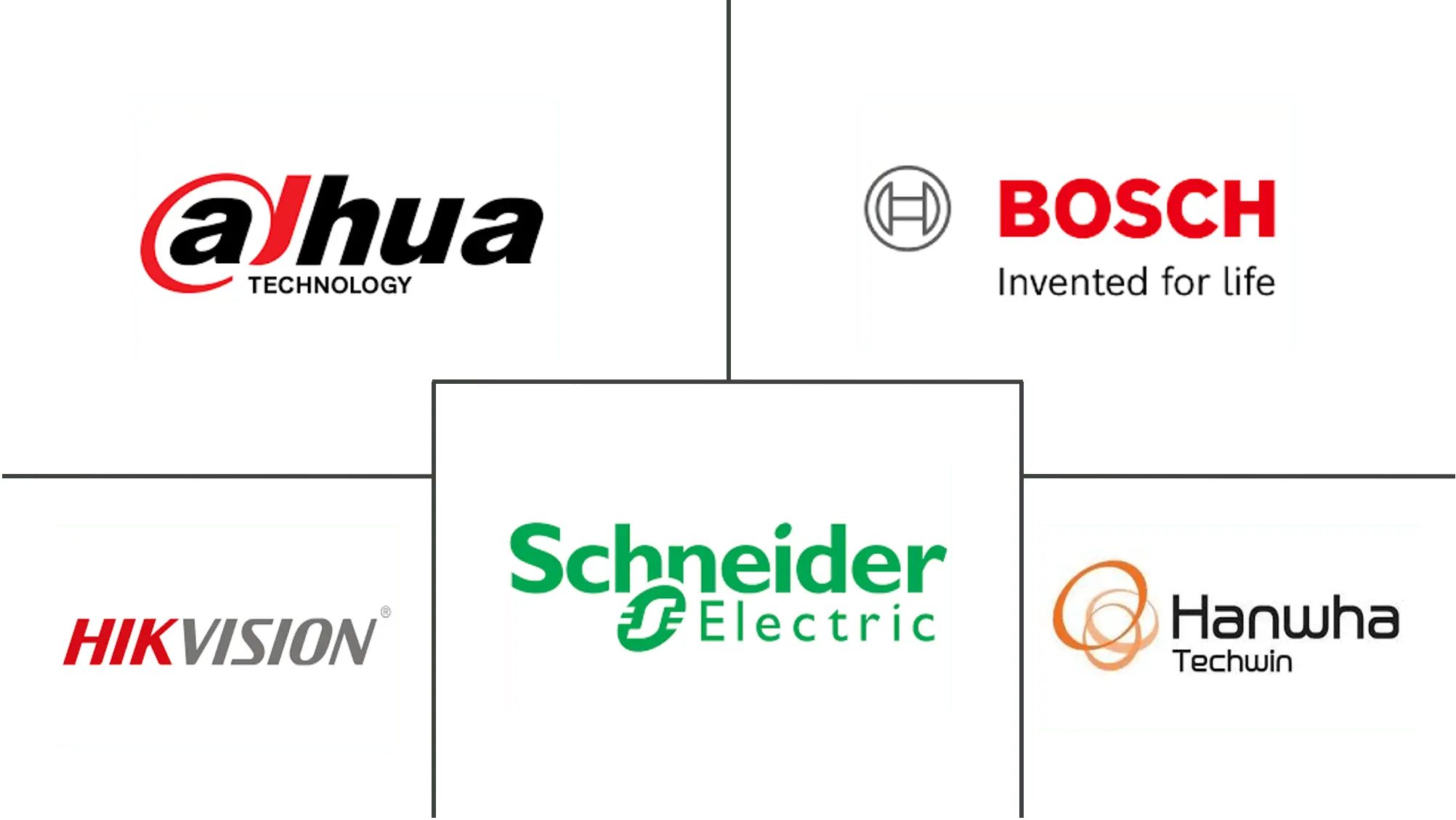Market Size of US Video Surveillance Industry

| Study Period | 2019 - 2029 |
| Base Year For Estimation | 2023 |
| Market Size (2024) | USD 12.34 Billion |
| Market Size (2029) | USD 22.04 Billion |
| CAGR (2024 - 2029) | 12.30 % |
| Market Concentration | Low |
Major Players
*Disclaimer: Major Players sorted in no particular order |
Need a report that reflects how COVID-19 has impacted this market and its growth?
US Video Surveillance Market Analysis
The US Video Surveillance Market size is estimated at USD 12.34 billion in 2024, and is expected to reach USD 22.04 billion by 2029, growing at a CAGR of 12.30% during the forecast period (2024-2029).
In the United States, surveillance cameras are most common among private-sector retail and commercial establishments, such as hotels, restaurants, and office complexes.
- The country is also witnessing the rising adoption of smart home security cameras, which may further expand the scope of the market studied. AI-based video analytics further enhance efficiencies, offering many non-security-related insights for businesses, especially in smart city applications. Recently, Amazon announced the AWS Panorama technology that enables integrators to work with a developer to easily create customized deep learning and video analytic apps for video surveillance cameras, regardless of manufacturer.
- The use of video security cameras has expanded in recent years in the United States. Integrated video security cameras include technology that enables users to send information efficiently and quickly. This capability, however, may jeopardize the confidentiality of the scenario that has been hacked or captured. Malicious operations are performed via the smooth transmission of video footage and clips to unauthorized users.
- Over the past several years, video surveillance systems have become a part of the Internet of Things (IoT). An IoT sensor can often detect even more than humans, such as levels of pollutants in the air, noise level, and vibrations. For this reason, they are poised to be integrated into many camera-based surveillance solutions as they allow users to monitor threatened areas.
- However, like other IoT systems, inherent security risks can lead to significant violations of a user's privacy. Advanced machine learning techniques, primarily based on deep learning, are being researched and integrated within modern video surveillance systems for automating multiple tasks, including weapon detection, fire detection, in-store shopping, sensors of face recognition, and anomaly detection.
- Major industry verticals are trusting surveillance as a better platform for altering the behavior of employees to yield better results. Corporate companies' surveillance tactics had highly adverse effects on employees, resulting in the emergence of privacy issues, increased stress, and the loss of identity. However, like any intrusive technology, the benefits of deploying public video cameras must be balanced against the costs and dangers.
